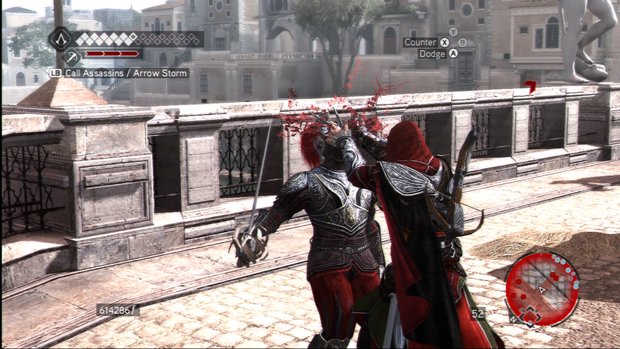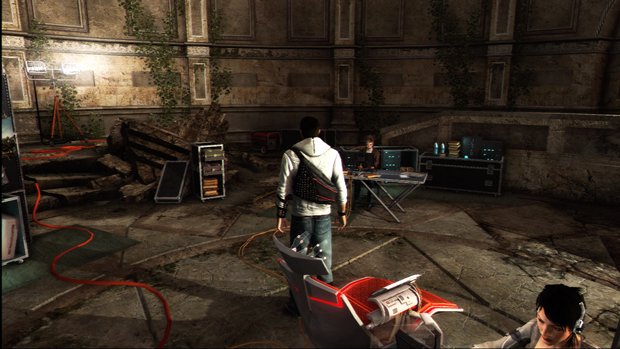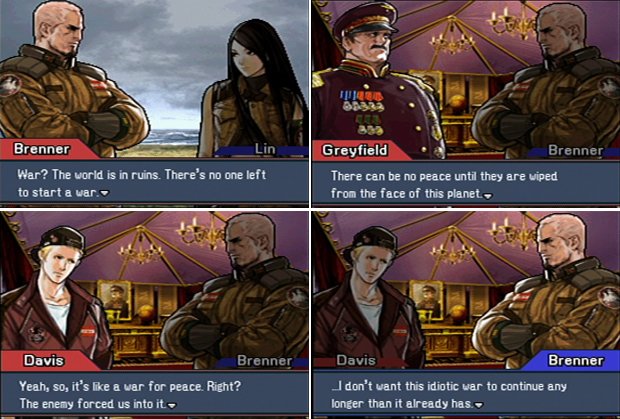The Top 7… Pointless game wars
Wars don't have to be real to be senseless. Here’s proof

But that’s not always the case. Whether by design or through slapdash writing, some of gaming’s most notable conflicts – when examined objectively – are completely meaningless, stupid exercises in futility for all involved. Here are some of our favorites.

7. The Templar-Assassin War
As fought in: The Assassin’s Creed series

What it is: A centuries-long secret conflict between the Templars, a medieval sect who want absolute control over humanity; and the Assassins, who want absolute freedom for humanity (and also to stab people).
Pointless because: We know, we know – fighting against the Templars certainly seems like a war worth fighting. They’re total bastards, and their ultimate goal is to enslave humanity through direct mind control, all in the name of “protecting” it from itself. But think: so far, we’ve seen the Assassins wage secret wars against the Templars three times (six, if you count the handheld spinoffs). And while Assassins have been victorious every time, their efforts still add up to a modern world in which the Templars control nearly everything and the Assassins are on the verge of extinction.

Above: Why are they hiding underground? Because it’s the only place Templar surveillance can’t reach, that’s why
From the beginning, the games make it clear that no matter how hard the Assassins fight in the past, their actions will eventually result in their order’s near-total defeat. After all, Altair and Ezio’s adventures are just the genetic flashbacks of Desmond, a man living in the Templar-dominated present – so at best, their victories have just been irritations to the Templars that delay the inevitable.
You can convince yourself that what you’re doing in the “past” has some real bearing on the game’s plot, but in the end you’re little more than a bee stinging an elephant. And if recent theories that Desmond’s bits are just more memories viewed through a post-apocalyptic Animus turn out to be true, then players’ role in the “war” seems even more meaningless and doomed.
Sign up to the GamesRadar+ Newsletter
Weekly digests, tales from the communities you love, and more
6. The Rubinelle-Lazuria War
As fought in: Advance Wars: Days of Ruin

What it was: A century-long war between the fictional superpowers Rubinelle and Lazuria, which manages to continue even after an apocalyptic meteor shower kills 90 percent of humanity and leaves the world a burned-out husk.
Pointless because: We may never know what first sparked the conflict between Rubinelle and Lazuria, or what ideals its soldiers held dear as they fought and died for 100 years. It all became irrelevant the moment their civilizations were reduced to a cinder. After that, there was no Rubinelle or Lazuria – just a vast, blasted wasteland inhabited by pockets of survivors. At that point, the only thing that makes sense is for what’s left of humanity to unite and rebuild (or at least to pick each other off for the remaining resources). But instead, the two armies keep their old hostilities going, seemingly just because it’s what they were used to doing.

Well, that’s not entirely true; there were two real reasons the two armies were still fighting, but they weren’t good ones. The first was because Rubinelle’s army had reunited under the banner of Greyfield, a fat megalomaniac who intended to crown himself king of the ash pile. The second was that the conflict was secretly being spurred on by a shadowy defense contractor that wanted to use the world’s death throes as an excuse to experiment on its remaining population.
So, yeah – between the pompous strongman, the creepy arms dealers and the catastrophic state of the world, it’s hard to think up a good justification for the remains of two devastated militaries to keep at each other’s throats.



